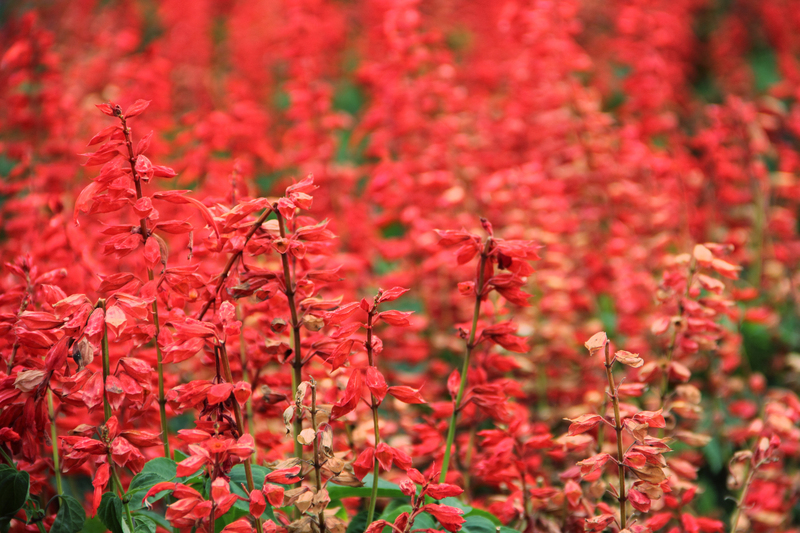Explore Diverse Hedge Trimming Techniques Today
Posted on 08/06/2025
Explore Diverse Hedge Trimming Techniques Today
Are you looking to transform your garden or landscape into an attractive, tidy, and healthy space? Hedge trimming is a crucial aspect of landscape maintenance that not only enhances curb appeal but also boosts plant vigor. With an array of hedge trimming techniques available, finding the best fit for your yard can make all the difference. In this comprehensive guide, you'll explore various hedge cutting methods and learn how to keep your hedges lush, neat, and sculpted year-round.

Why Is Hedge Trimming Important?
Before delving into specific techniques, it's essential to understand the significance of hedge trimming:
- Plant Health: Regular cutting encourages dense growth and removes diseased branches.
- Aesthetics: Neatly trimmed hedges define boundaries and add structure to landscapes.
- Safety: Pruning away overhanging branches prevents interference with walkways and buildings.
- Wildlife Habitat: Proper trimming maintains nesting niches for birds and beneficial insects.
*In summary, frequent and correct hedge maintenance is the key to robust, attractive, and enduring garden features.*
Understanding the Basics of Hedge Trimming
Trimming hedges involves more than just cutting back foliage. It requires knowledge about shapes, timings, and proper tool use. Here are some fundamentals:
- Timing: Most hedges benefit from pruning during late winter or early spring, before new growth appears.
- Frequency: Fast-growing species might need multiple trims a year; slower types, only once.
- Equipment: Choose from hand shears, electric hedge trimmers, or pole pruners based on hedge height and thickness.
- Sanitation: Clean tools between uses to prevent the spread of diseases.
Pro Tip: Always check nesting birds before embarking on major trimming, particularly during the breeding season.
Diverse Hedge Trimming Techniques Explained
Whether your garden hosts formal evergreen walls or natural, flowering boundaries, there is a trimming technique to suit every aesthetic. Below, we'll explore multiple hedge cutting strategies to help you achieve your desired look.
1. Formal Hedge Trimming
Formal hedges require precision and regular maintenance to maintain their elegant, geometric appearance. This hedge management approach is especially popular for boxwood, privet, yew, and beech.
-
Step-by-Step Technique:
- Set Guidelines: Use string lines and stakes to mark straight edges and heights.
- Shape Gradually: Begin trimming at the top and move down the sides, holding blades parallel to lines.
- Taper Sides: Leave the base wider than the top to ensure sunlight reaches lower branches.
- Check Symmetry: Frequently step back to inspect evenness and correct as needed.
Key Benefit: Breathtaking, symmetrical hedges that add refined structure to any landscape.
2. Informal Hedge Trimming
For a more relaxed, naturalistic feel, informal hedges are an excellent choice. Consisting of mixed plants or free-form shrubs, they require gentler pruning to maintain shape while encouraging natural growth habits.
- Trim only to control size, remove dead wood, and shape lightly without imposing strict lines.
- Focus on thinning rather than shearing, letting light penetrate the center of the shrubs.
- Allow each plant's distinct character to shine through your pruning.
Result: Flowing, organic boundaries teeming with wildlife and seasonal interest.
3. Rejuvenation (Hard) Pruning
Sometimes, overgrown or neglected hedges need a fresh start. Rejuvenation pruning or hard pruning involves cutting plants substantially back--often close to the ground.
- When to Use: Suitable for tough species like privet or laurel. Avoid for slow-growing or highly ornamental varieties.
- Technique: Cut branches back to 6-12 inches above ground in early spring. Water and fertilize after cutting.
Caution: Not all hedges respond well. Research your plant species before undertaking hard cuts.
4. Topiary Trimming
For gardeners seeking creativity, topiary offers endless opportunities. This artistic technique sculpts hedges into geometric patterns, animals, or whimsical shapes.
- Tools: Use hand shears or specialty topiary trimmers for finer control.
-
Step-by-Step:
- Start with simple shapes (spheres, cubes) for beginners.
- Regularly prune new growth to maintain defined edges.
- Install wire frames as guides for intricate designs.
Standout Result: Unique focal points and garden character that captivate visitors' attention.
5. Hedge Layering
Less well-known but useful, hedge layering involves interweaving branches of existing plants along a hedge line to thicken and reinforce it. It's perfect for boundary hedges exposed to wind or grazing animals.
- Cut partial slits into stems and bend them down to the ground.
- Peg or secure stems horizontally and allow them to root and reshoot.
- Outcome: A denser, more impenetrable barrier over time.
6. Selective Pruning and Thinning
This hedge trimming method focuses on removing specific branches rather than shearing large areas. It's ideal for flowering shrubs, allowing more sunlight and air into the plant's core.
- Target crossing, overcrowded, or weak branches at the base or outward-facing buds.
- Use sharp, clean pruners to minimize tissue damage.
- Retains natural shape while unblocking energy for healthy growth and blooms.
Bonus: Promotes better flowering and reduces pest/disease risk.
Essential Tips for Flawless Hedge Trimming
-
Keep Tools Sharp:
Dull blades tear rather than cut, damaging branches and increasing disease vulnerability. -
Work at the Right Time:
Avoid heavy pruning when new growth is tender or when weather is too hot and dry. -
Maintain Safety:
Wear gloves, eye protection, and use stable ladders when necessary, especially for tall hedges. -
Dispose Responsibly:
Compost healthy clippings, but bag up any material with signs of disease.
Choose the Right Hedge for Your Technique
Different hedge species respond uniquely to various trimming styles. Here's a quick guide for matching plant to method:
- Boxwood & Yew: Suited for formal and topiary trimming.
- Privet, Laurel, Hawthorn: Adaptable--handle hard pruning, layering, and informal shaping.
- Forsythia, Weigela: Prefer selective pruning and thinning to encourage blooms.
- Hornbeam, Beech: Great for formal, dense privacy screens.
Understanding your hedging species' growth habits is essential for applying the most effective technique and enjoying optimal results.
Common Mistakes to Avoid in Hedge Cutting
- Flat Sides: Cutting hedges upright or with inward-sloping sides starves lower branches of light, causing dieback.
- Over-Cutting: Removing too much at once can shock plants and inhibit regrowth.
- Ignoring Plant Needs: Not all species tolerate the same pruning intensity--research before trimming.
- Disregarding Wildlife: Disturbance to nesting birds and insects can be avoided with mindful timing and inspection.
Modern Innovations in Hedge Trimming Methods
Technology has revolutionized garden care, and hedge maintenance is no exception. Here's a look at modern trends enhancing traditional hedge cutting practices:
- Cordless Trimmers: Battery-powered models make large-scale work silent, mobile, and eco-friendly.
- Telescopic Pruners: Easily reach high or deep sections without ladders, reducing risk of falls.
- Laser Guides: Some trimmers project a visible line for perfectly straight cuts.
- Eco-Approaches: Solar-powered and reduced-emission technologies for sustainable landscape maintenance.
Stay updated on the latest garden tools--they can dramatically improve efficiency, safety, and the quality of your trimmed hedges.

How to Maintain Healthy and Beautiful Hedges
Trimming alone is not enough. Continuous care will ensure your hedges thrive:
- Mulch: Retain soil moisture and prevent weeds by mulching the base.
- Fertilize: Apply slow-release or organic fertilizers in early spring for fresh growth.
- Irrigate: Young or recently pruned hedges need consistent watering, especially during drought.
- Inspect Pests/Disease: Identify and treat issues early to prevent widespread problems.
A holistic approach--combining proper hedge trimming with robust cultural care--sets the stage for enduring structure and beauty.
Conclusion: Perfect Your Garden with Skilled Hedge Trimming Techniques
In summary, the world of hedge trimming is filled with diverse techniques suited to every landscape style and plant species. Whether you crave the polished look of a formal yew, the whimsy of topiary, or a flourishing wildlife-friendly border, mastering the right trimming method is your ticket to garden excellence.
- Formal hedge shaping delivers precision and structure.
- Informal and selective cutting fosters lush, natural beauty.
- Rejuvenation and layering can rescue and reinforce even the oldest hedges.
- Modern tools and time-tested care routines make maintenance effortless and effective.
By implementing diverse hedge trimming techniques, any gardener can create boundaries that are attractive, healthy, and enduring. Start exploring these methods today and take your outdoor space to new heights!
For more tips and expert advice on landscaping, stay tuned to our blog for all things gardening and hedge care.

